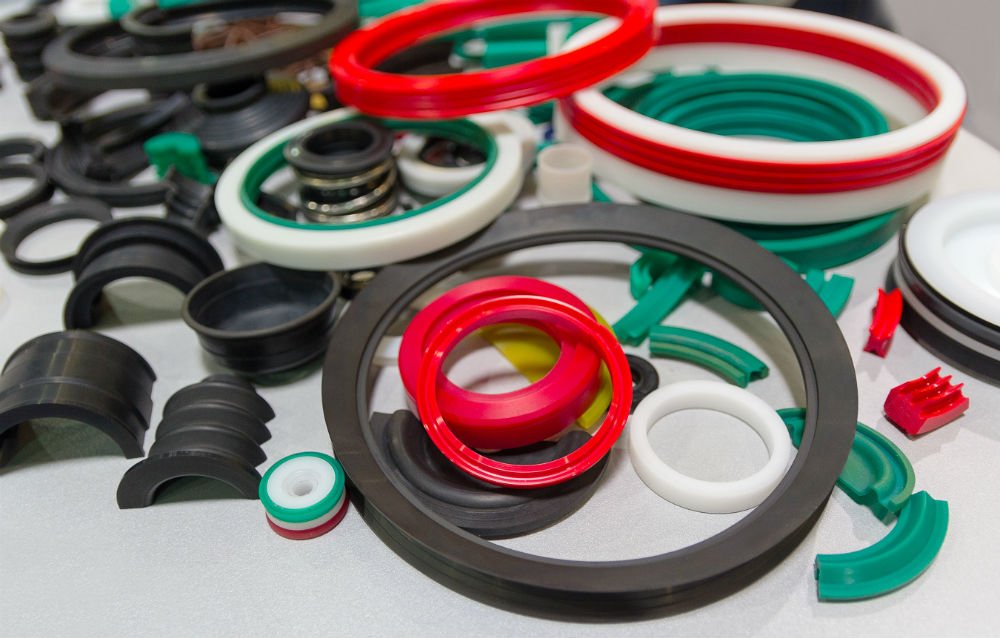As someone who needs to use binding materials on a day to day basis, it’s hard to know which material is the most effective for your needs. With so many options available on the market, trying to figure it which material to use without the proper knowledge could lead to costly damage.
When you are looking to provide a service that would require you to use a sealant, the last thing you want is to buy something that will not provide optimal coverage. Or, if you are doing a home project, you don’t want something breaking down that you will just have to repair.
That is why it’s good to know the differences, along with the pros and cons of materials like polyurethane, silicone, and rubber.
Each product is similar in some ways but different enough that you’ll want to educate yourself on all the particulars of each before making a final decision.
After all:
When you’re investing in something, it’s good to be well-informed so that you are not blindly buying something that may not get the job done and will require you to buy materials just to repair unexpected damages.
Whether you are using these products for personal projects or you’re a business owner, you still want to have all the information in front of you. If you need polyurethane, silicone, or rubber as a liquid or a solid, this list will go over the pros and cons of each item. This way you can make an educated decision and be happy with the results of your purchase.
You may not have been entirely knowledgeable about each product listed above, so take a look at the list below.
Here you will find not only what each material is, but the pluses and minuses that accompany each one. Hopefully, by the end, you will have a better idea as to what you should buy when you are needing a sealant.
Polyurethane
What is polyurethane? Polyurethane is a synthetic resin that is primarily used as constituents of paints, varnishes, adhesives, and foams. As a true sealant, it is a substance that is often used as a barrier between two surfaces.
You can use polyurethane as a mold or cast to make solid products. It is a natural substance meaning it’s made up of organic materials. Polyurethane is typically used in furniture and as a cushioning material for upholstered furniture since it’s known for making furniture more comfortable with its flexible foam.
Pros
- Tear-resistant
- Holds up to abrasion well for sturdier needs
- Works best on natural products, such as wood
- Inexpensive, so it is good for your wallet
- Has a good load-bearing capacity
- Can be manipulated through chemistry, so it can be whatever you need it to be
Cons
- Doesn’t dry for 24 hours and remains tacky during this time
- Is not ideal for cold temperatures as the bond will break down if the temperatures drop too low
- Has a shorter lifespan since it’s made of organic material. The average life is between five to ten years.
 Silicone
Silicone
Silicone works by bonding to the surface that it is applied to. Silicone is used in making molds and works best as a gasket between two surfaces or as a joint compound. You can commonly use silicone in a construction setting or for the development of paint and food products.
For those who have a construction business or have an upcoming project, you can see the pros and cons below to determine if this is a good choice for you.
Pros
- Silicone dries quickly
- Can be used for glass, tile, and metal
- You can easily remove silicone from castings or molds so there is no messy cleanup
- This is the best sealant for colder temperatures
- Silicone is malleable, which means you can hammer or press it into whatever shape you need it to be without the fear of breaking it
- Has a long life as it is made of inorganic material. The typical life is over twenty years.
Cons
- Silicone would not be ideal for high traffic areas due to not being resistant to abrasion
- Silicone is expensive since it is made of inorganic materials
- Is flammable when it comes in direct contact with an open flame
Rubber
Of course, you’ve heard of rubber. It’s most likely what you’re most familiar with. This soft material allows it to absorb vibrations and noise. Typically, automakers will use rubber to make seals and gaskets for their vehicles as it is used as an adhesive.
Besides this, there are many advantages to using rubber that you may not have previously thought about considering the prior knowledge you may have had about the material.
Pros
- Rubber is a cost-effective choice as it can be used for many applications
- You can use this product to reduce vibrations since it is quieter than other materials, which makes it very good for situations with loud noises
- Rubber is a very versatile material and can either be made hard or soft
Cons
- Rubber is not the most performance efficient material and its physical properties prevent it from becoming a sturdier substance
- Despite its not-so-sturdy properties, it is higher in cost than silicone
- Due to being biodegradable, rubber does not have a very long lifespan
When you are considering the job that you need a sealant for, weigh the pros and the cons. As with anything, there are advantages and disadvantages that need to be assessed before moving forward with your project.
Stated by urethane manufacturers, each material has its benefits that will be able to help you in any project that you need it for. With the size of your project, as well as your budget, you should be able to gauge which material best aligns with your needs.


